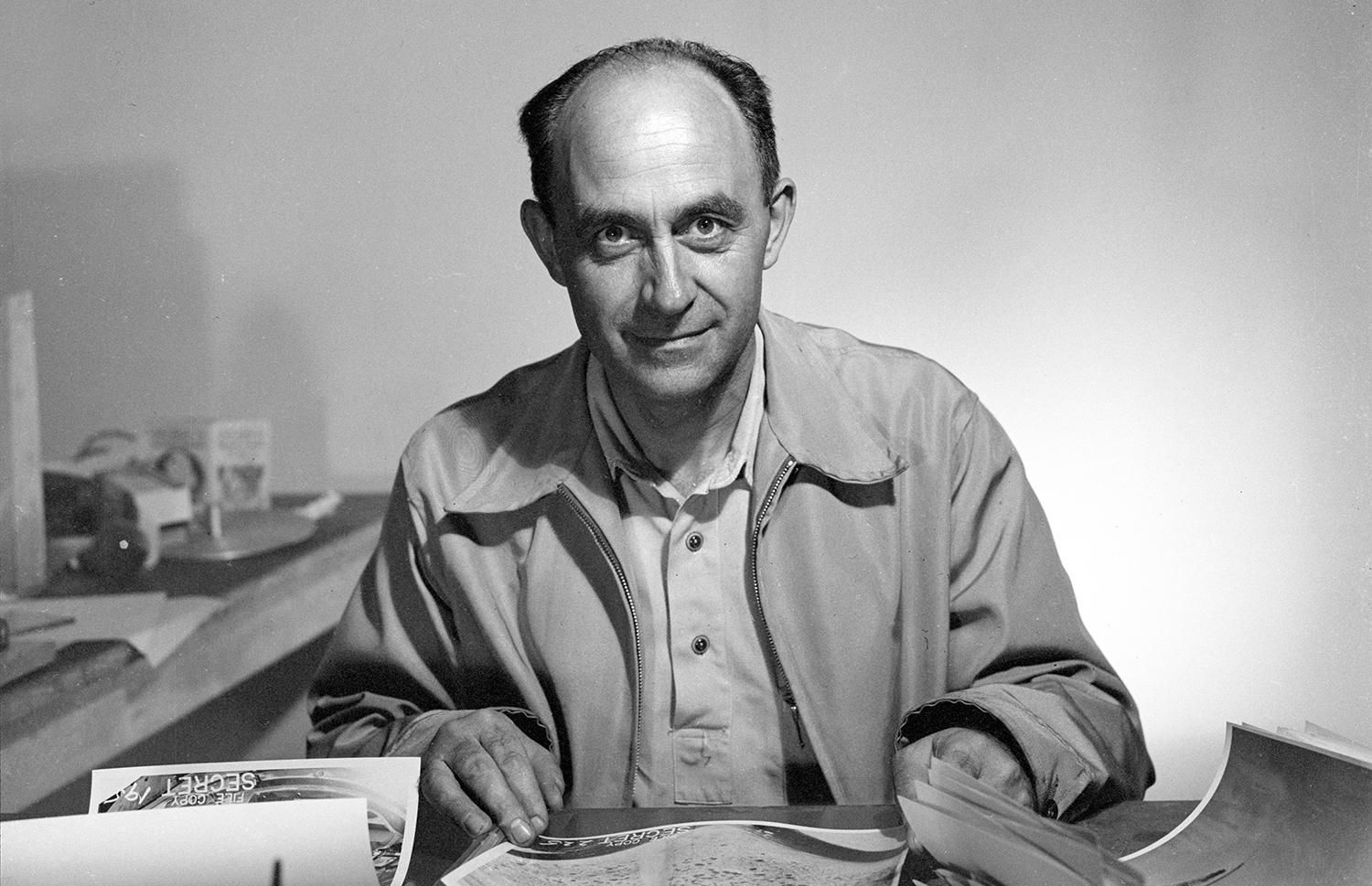December 2, 2017, was the 75th anniversary of the Chicago Pile-1 going critical at the University of Chicago. One of the most important branches of the far-flung Manhattan Project was the Metallurgical Laboratory or “Met Lab” at UChicago. Its primary role was to design a nuclear reactor, created through chain-reacting piles. The Met Lab’s most notable accomplishment was the Chicago Pile-1 (CP-1), where the world’s first controlled nuclear chain reaction took place.
Enrico Fermi, an Italian refugee physicist who came to New York City in late 1938, studied the fundamentals of fission and worked on how to control a nuclear reaction at Columbia University. Joining the Met Lab in Chicago, Fermi and his associates began designing a production pile and built a lattice of graphite blocks and uranium slugs in a rackets court under the west stands of Stagg Field. His goal was to create a self-sustaining nuclear reaction, when the reactor had a reproduction value (k) of one.
On the afternoon of December 2, 1942, Chicago Pile-1 went critical. It demonstrated a k value of 1.0006, and was allowed to reach a thermal output of 0.5 watts (ultimately it operated at 200 watts maximum). The continuous chain reaction was witnessed by Leo Szilard, Eugene Wigner, Leona Woods Marshall, and DuPont engineer Crawford Greenewalt along with dozens of others. Fermi’s basic design would be expanded and built at Hanford as the B Reactor.
Fermi later said, “The event would not have seemed in any way spectacular to a casual observer. You would have seen a large black graphite structure, of which there is a scale model, supported in part by a scaffolding of wooden beams. You would have seen a number of people reading instruments and recording their results. Perhaps you might not even have noticed many signs of excitement in their faces.”
UChicago commemorated the CP-1 anniversary with a series of events, “Nuclear Reactions.” Former Secretary of Energy Ernest Moniz was a keynote speaker. The Making of the Atomic Bomb author Richard Rhodes’ keynote talk can be read here. UChicago also produced a video, Nuclear Reactions, on the Met Lab and its legacy for today.
AHF President Cindy Kelly attended the symposium. “UChicago orchestrated a wonderful program for the 75th anniversary of the Chicago Pile-1,” she said. “The events included speakers on different issues with musical performances and art to capture the hopes and fears generated by the control of nuclear energy.”
Other events featured renowned nuclear historians and experts, including Gino Segrè and Bettina Hoerlin, authors of The Pope of Physics: Enrico Fermi and the Birth of the Atomic Age, and William Lanouette, author of Genius in the Shadows: A Biography of Leo Szilard, the Man Behind the Bomb. Lanouette’s talk can be watched here.
For more on the Chicago Pile-1, the Met Lab, and their legacies for today, please visit our “Ranger in Your Pocket” program on the University of Chicago.





